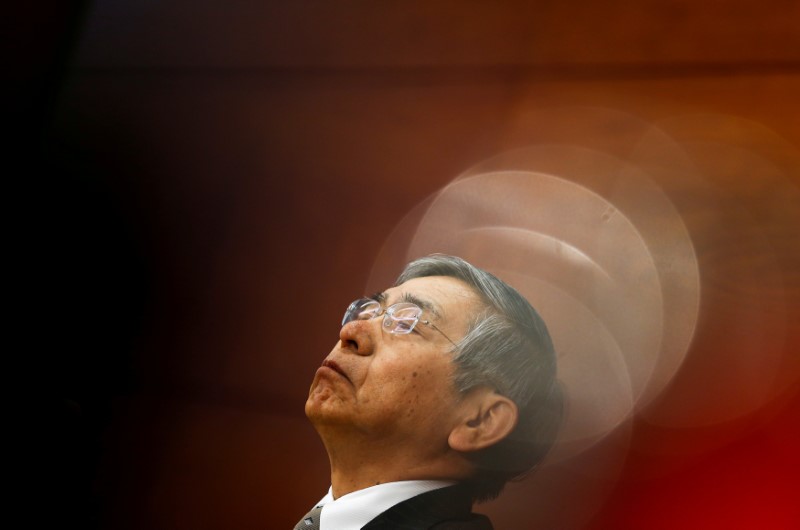By Tomo Uetake
TOKYO (Reuters) - For decades, economists have tried to guess central bank policy direction by studying subtle changes in official language -- now, researchers are finding new clues on policy, not in the words of central banker but in their faces.
In Japan, two artificial intelligence researchers, one from Nomura Securities (T:8604) and the other from Microsoft (O:MSFT), are using software to analyse split-second changes in the facial expressions of Bank of Japan Governor Haruhiko Kuroda at his post-meeting press conferences.
Their study found that Kuroda showed fleeting signs of "anger" and "disgust" at news conferences that preceded two recent major policy changes -- the January 2016 introduction of negative interest rates and the adoption of the so-called "yield curve control" policy September last year.
The implication is that Kuroda was beginning to sense the constraints of existing policies about six or seven weeks before the central bank's board actually decided to change them, the researchers concluded. The research was presented last weekend to a subcommittee meeting of the Japanese Society for Artificial Intelligence (JSAI).
At press briefings that took place immediately after the changes were announced, Kuroda's face registered less "sadness", they found.
This could become a powerful tool in predicting policy changes, said Yoshiyuki Suimon, a researcher at Nomura's Financial & Economic Research Centre and the lead author of the study.
"We'd like to analyse (Fed chair Janet) Yellen and (ECB Gov. Mario) Draghi next," Suimon said.
Suimon and Daichi Isami, a Microsoft researcher, had studied together at the University of Tokyo's Graduate School of Frontier Sciences and came up with this idea around the beginning of this year.
Working on their own time, the pair took screenshots of Kuroda's face every half-second from video footage.
Then they analysed those images with a programme developed by Microsoft called "Emotion API" that uses a visual recognition algorithm to break down human emotions into eight categories: happiness, sadness, surprise, anger, fear, contempt, disgust and neutral.
Most of the time Kuroda's expression was judged to be neutral. But the algorithm also detected subtle expressions of other emotions that could be interpreted in various ways.
The study appears to be the first attempt to decipher policy implications from facial expressions of a central bank chief, said Kiyoshi Izumi, professor of the University of Tokyo, who specialises in financial data mining and artificial market simulation.
"Their findings offer a fresh approach to analysing policymakers' inner world and minds," said Izumi, also a member of the JSAI. "I think it's possible to build up data on other key people globally, quantify it to predict what comes next."
The analysis uses images that are traditionally considered subjective and not measurable as a new source of information, he said.
Suimon said he has already received inquiries from institutional investors about his research.
Their study was conducted earlier this year and did not include the BOJ's last post-policy meeting conference in September. The next meeting takes place Oct 30-31 at which market participants expect no change to policy.

A BOJ spokesman said the bank was not in a position to comment on the study.